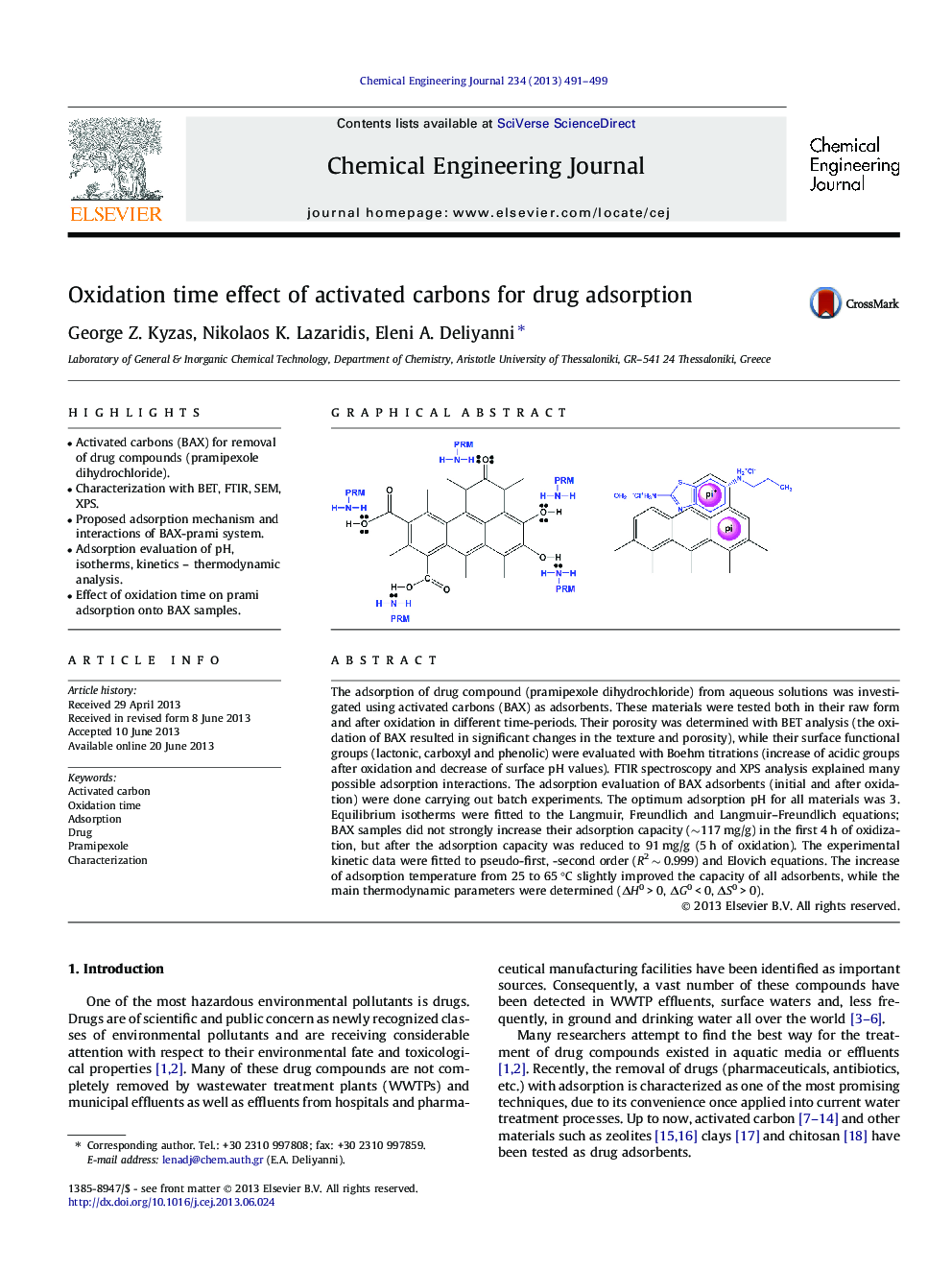| کد مقاله | کد نشریه | سال انتشار | مقاله انگلیسی | نسخه تمام متن |
|---|---|---|---|---|
| 148092 | 456405 | 2013 | 9 صفحه PDF | دانلود رایگان |

• Activated carbons (BAX) for removal of drug compounds (pramipexole dihydrochloride).
• Characterization with BET, FTIR, SEM, XPS.
• Proposed adsorption mechanism and interactions of BAX-prami system.
• Adsorption evaluation of pH, isotherms, kinetics – thermodynamic analysis.
• Effect of oxidation time on prami adsorption onto BAX samples.
The adsorption of drug compound (pramipexole dihydrochloride) from aqueous solutions was investigated using activated carbons (BAX) as adsorbents. These materials were tested both in their raw form and after oxidation in different time-periods. Their porosity was determined with BET analysis (the oxidation of BAX resulted in significant changes in the texture and porosity), while their surface functional groups (lactonic, carboxyl and phenolic) were evaluated with Boehm titrations (increase of acidic groups after oxidation and decrease of surface pH values). FTIR spectroscopy and XPS analysis explained many possible adsorption interactions. The adsorption evaluation of BAX adsorbents (initial and after oxidation) were done carrying out batch experiments. The optimum adsorption pH for all materials was 3. Equilibrium isotherms were fitted to the Langmuir, Freundlich and Langmuir–Freundlich equations; BAX samples did not strongly increase their adsorption capacity (∼117 mg/g) in the first 4 h of oxidization, but after the adsorption capacity was reduced to 91 mg/g (5 h of oxidation). The experimental kinetic data were fitted to pseudo-first, -second order (R2 ∼ 0.999) and Elovich equations. The increase of adsorption temperature from 25 to 65 °C slightly improved the capacity of all adsorbents, while the main thermodynamic parameters were determined (ΔH0 > 0, ΔG0 < 0, ΔS0 > 0).
Figure optionsDownload as PowerPoint slide
Journal: Chemical Engineering Journal - Volume 234, December 2013, Pages 491–499